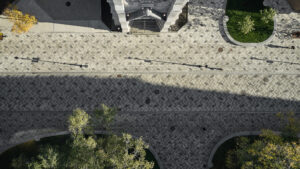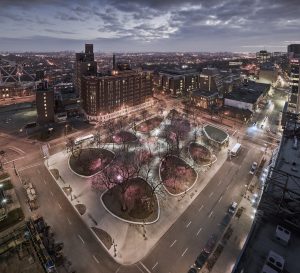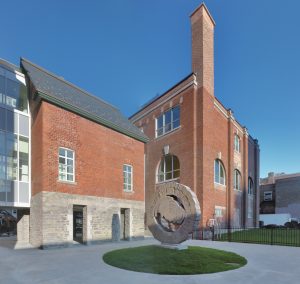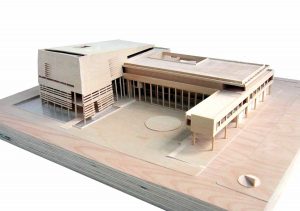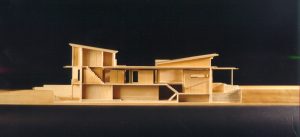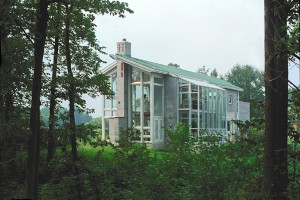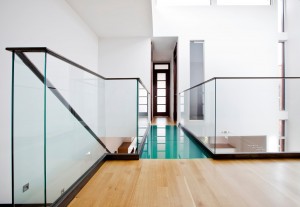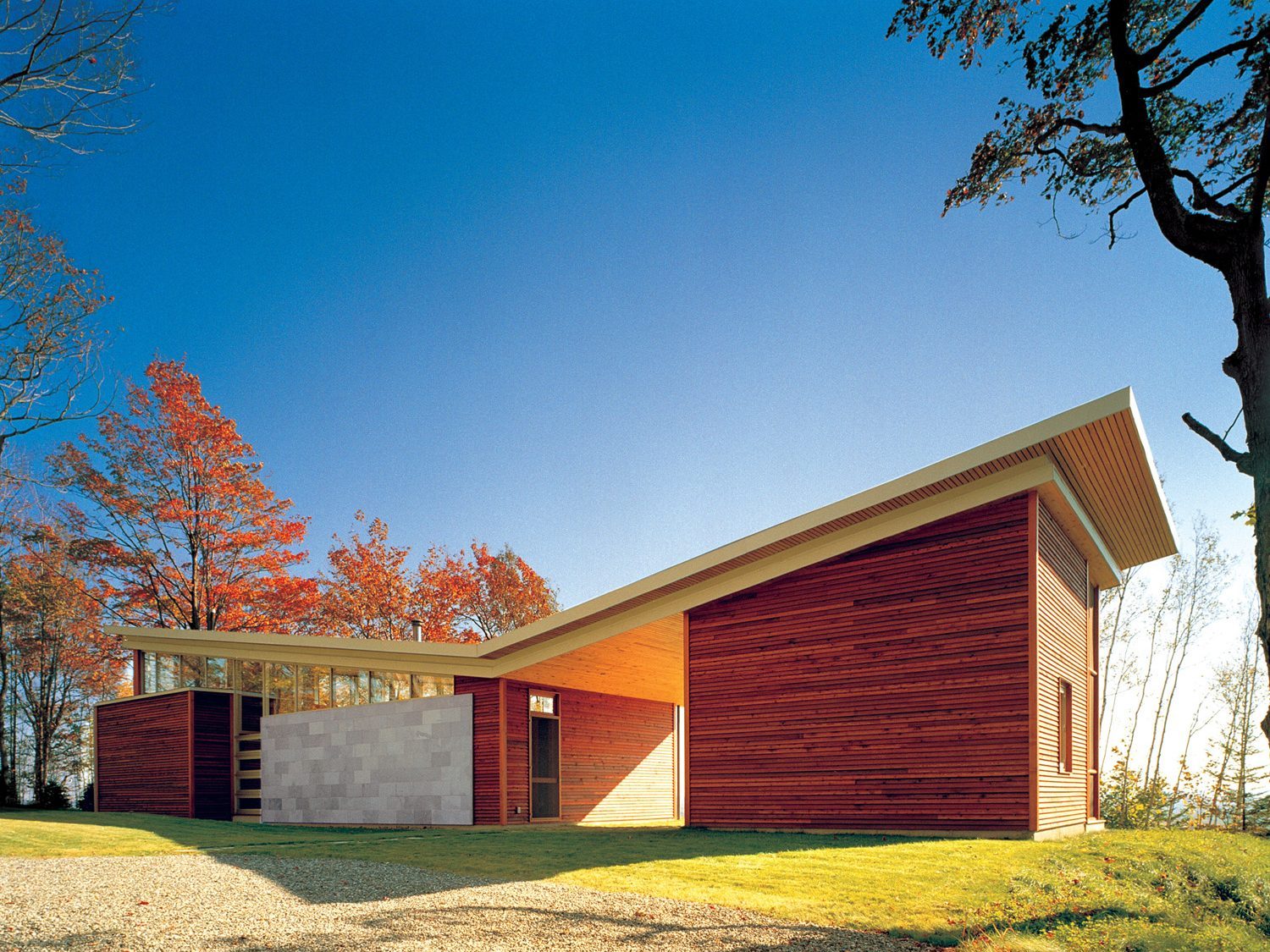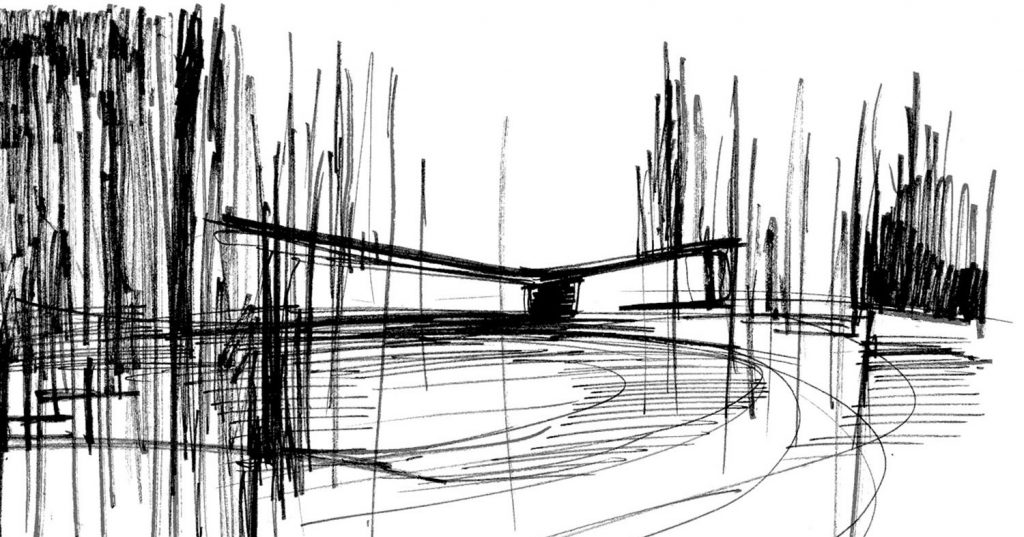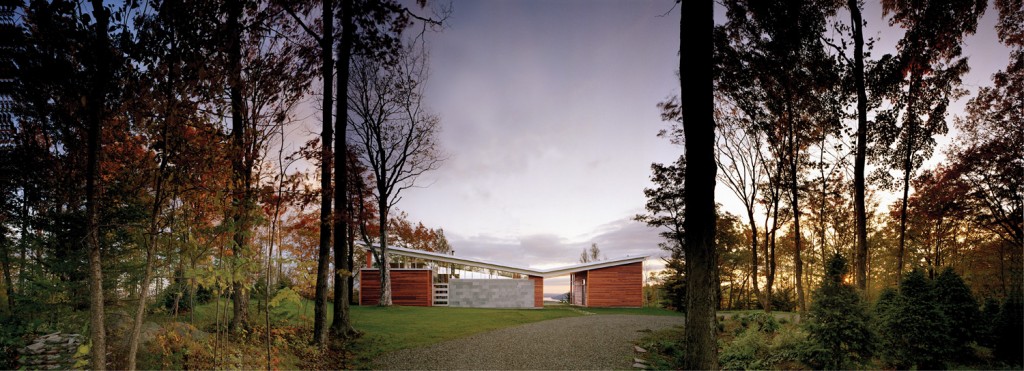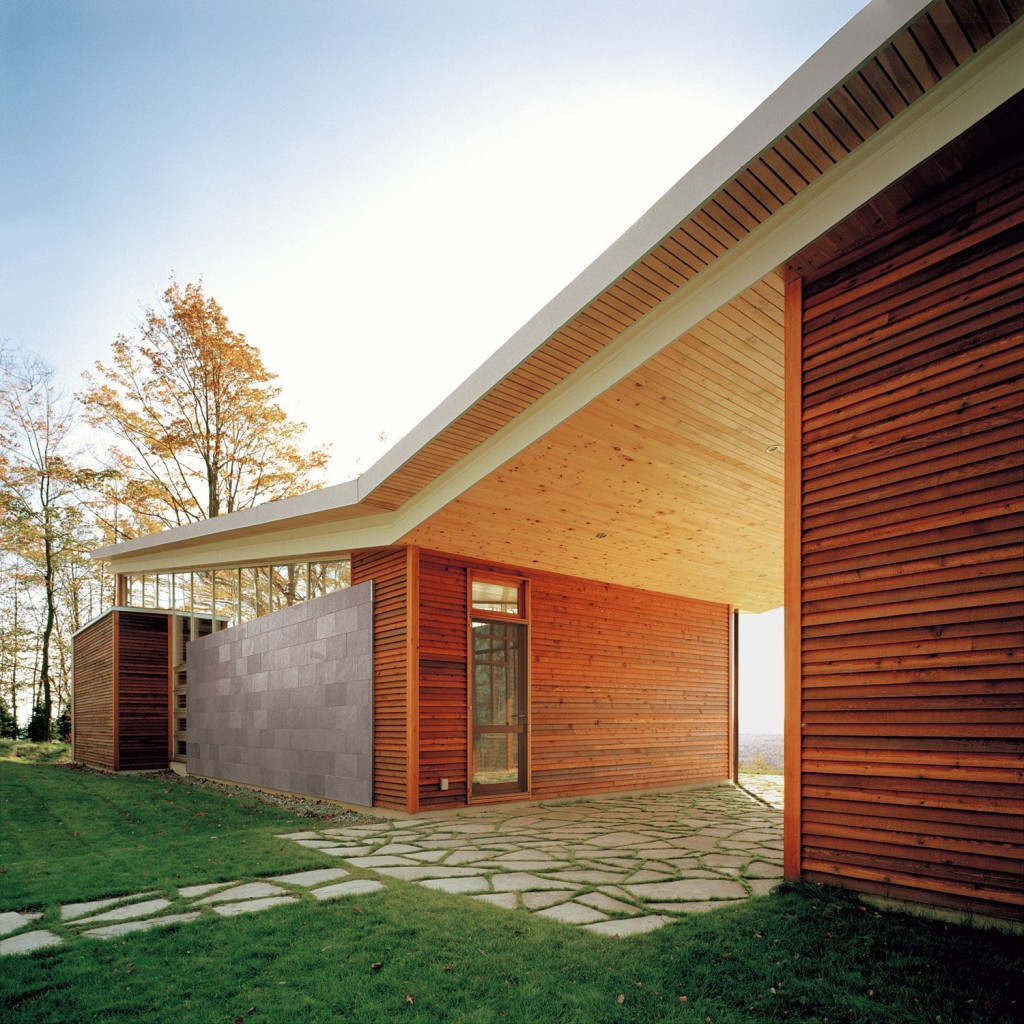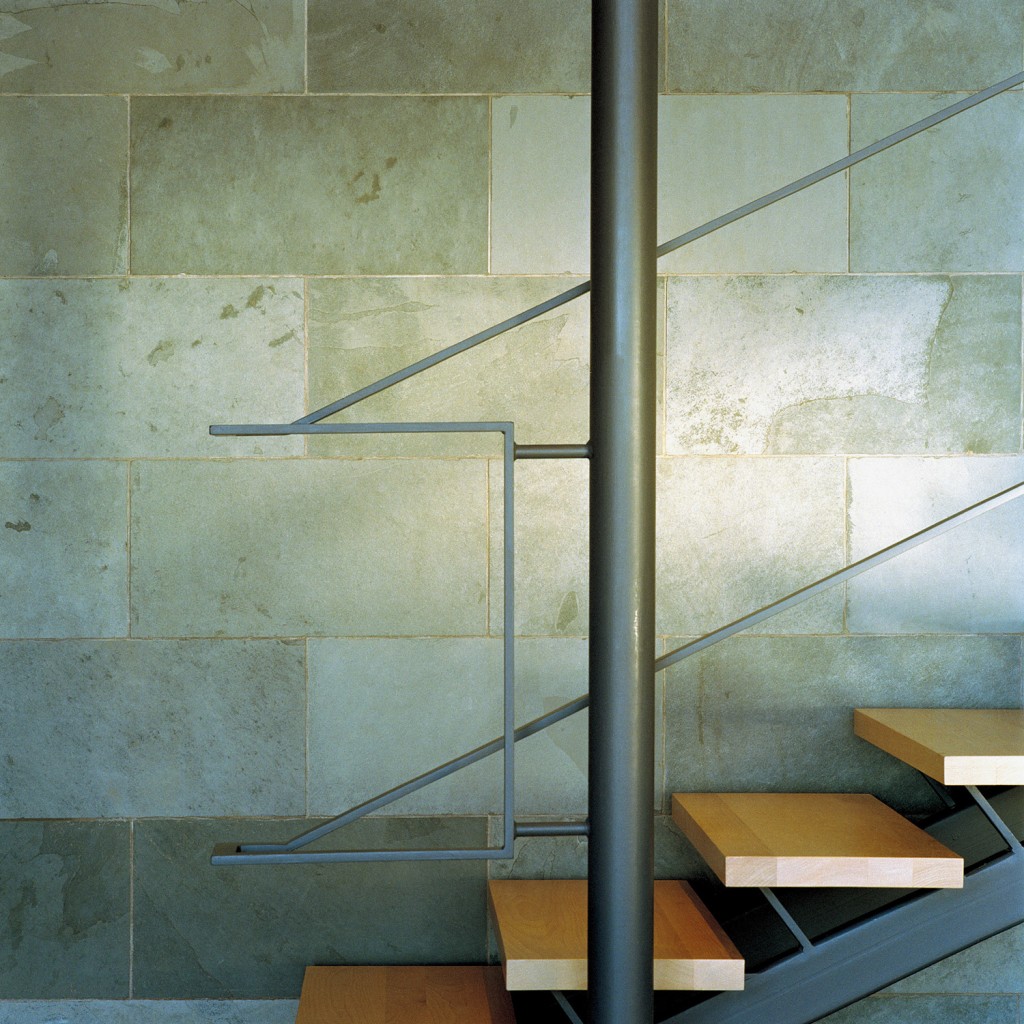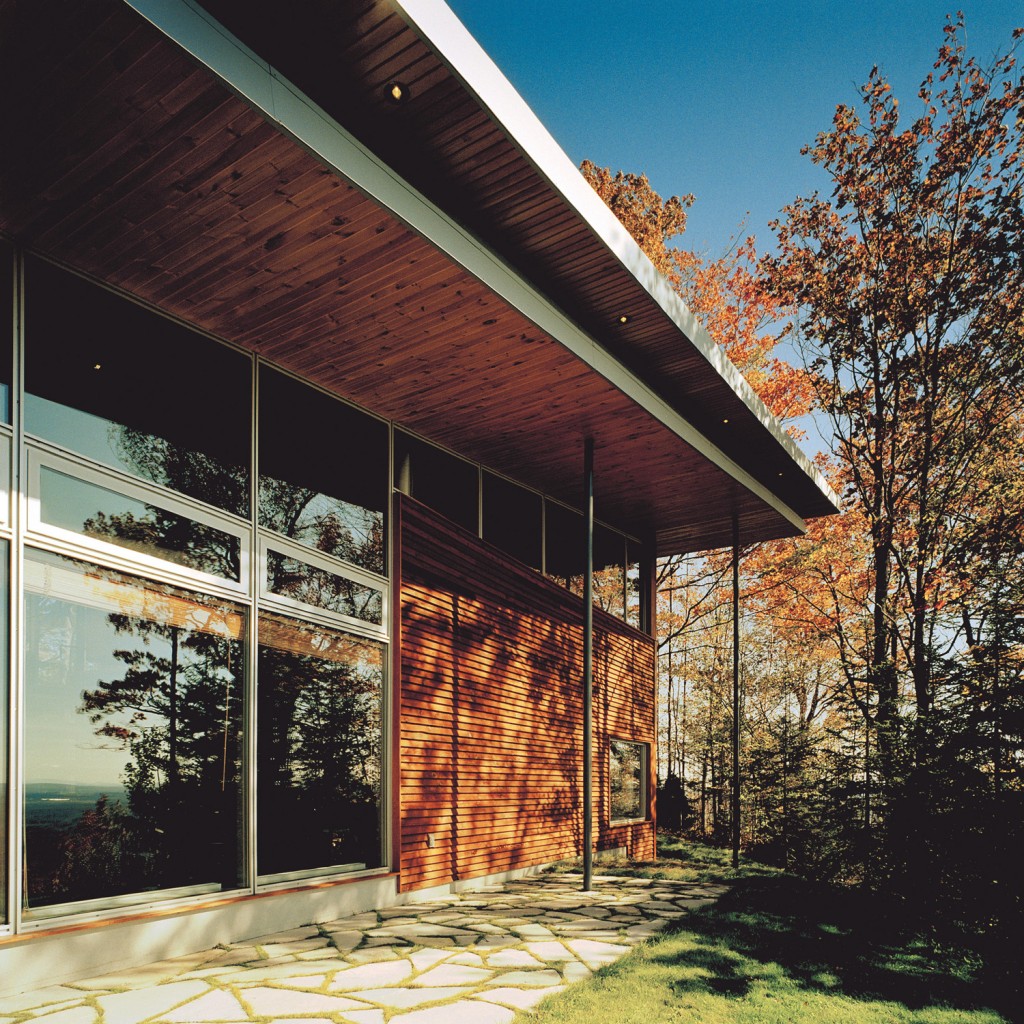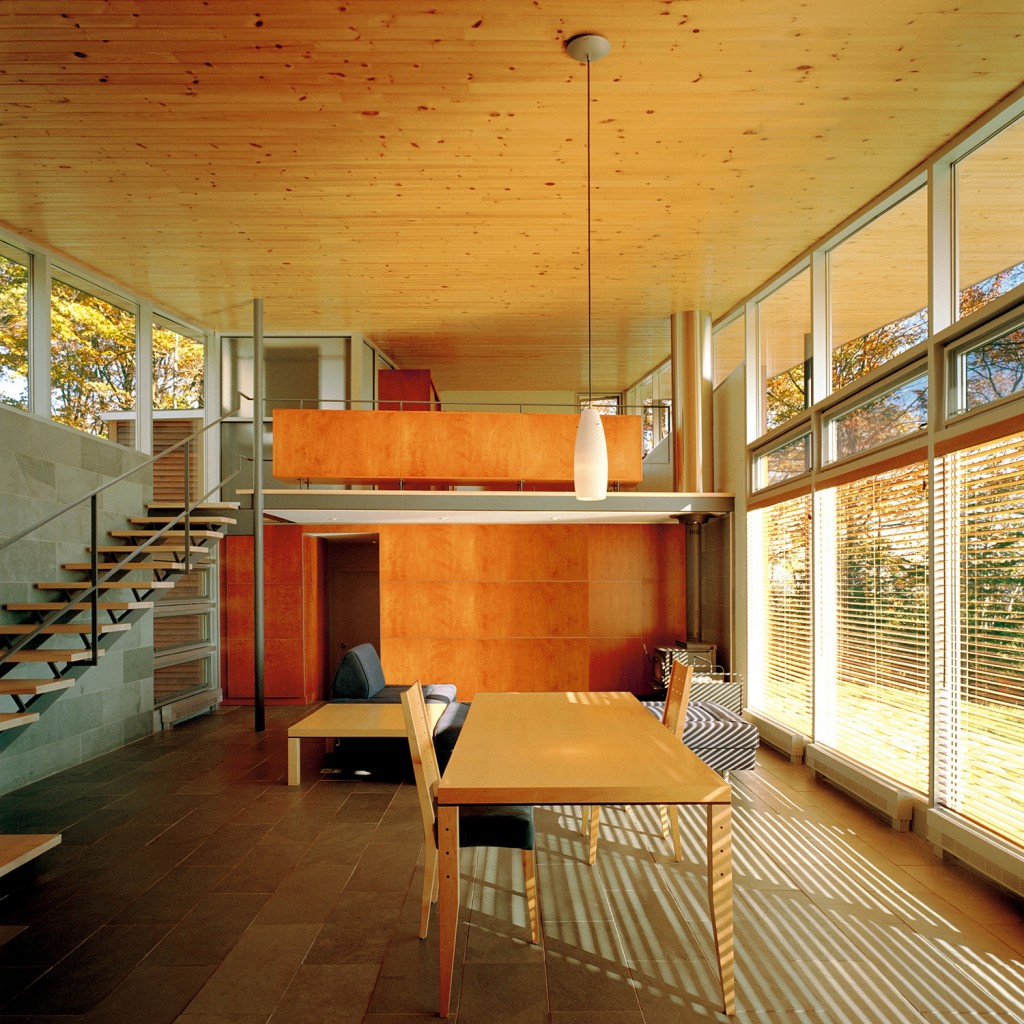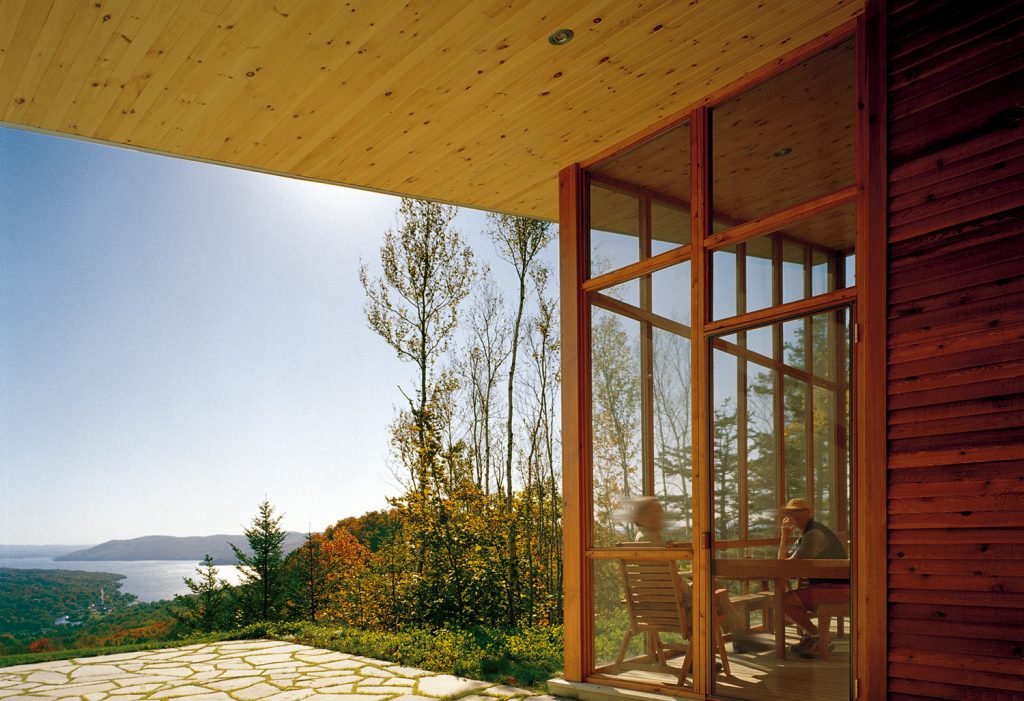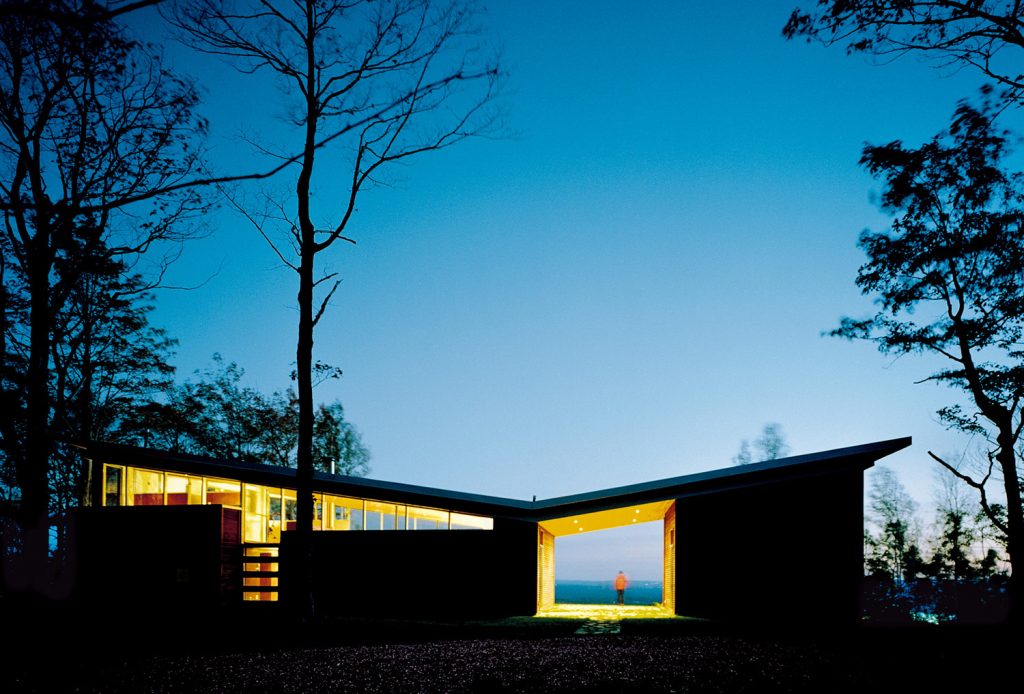Quebec’s Eastern Townships combine Appalachian topography with land shaped by more than two hundred years of agriculture to create landscapes that are at once dramatic, comforting, and profoundly human. Known as Lakeview Lookout, the site of Minton Hill House offers a panoramic view directly south over Lake Massawippi.
The house strikes a delicate balance between the engaging of its hill-top position and the provision of a sheltered domestic environment. Composed of four elements – the roof, the stone hearth, the wood shell, and the sun window – the house is at once an environmental filter, a view-framing device, and a series of gardens and courtyards.
Celebrating the house’s hill-top position with a spread-wing profile that gently separates land and sky, the floating roof is the project’s defining symbol. Its generous southern overhang provides the solar control of the vernacular farmhouse in a contemporary form.
The stone hearth is a folded plane of slate opening to the south that is both an environmental control device and a cradle for living and dining areas. Shielded from the high summer sun by the overhanging roof, the hearth provides cooling to the main living spaces in the summer. During the winter the hearth adapts to the low seasonal sun and a hot-water coil beneath the floor slab to become a passive heat sink.
Anchoring both ends of the house, the wood shell is a largely opaque cedar-clad volume that creates psychologically defensible spaces for private areas such as the bed rooms, the bathrooms, the home office and the kitchen. Providing eyes on the world, the sun window is an aluminum and glass curtain wall that opens generously to the south to welcome summer light and winter sun into the heart of the house.
The wood shell and the exterior of the stone hearth combine on the north side to form a screen that shields the house from northern weather. Arriving at the house on a gravel drive, the screen allows for the gradual revelation of the site’s spectacular view. The home office is pulled away from the main body of the house creating a gap in the screen that is at once a view framing device, a shelter for the main entry, a courtyard, and a passage through the building. The separation of two interior spaces by this exterior passage – a feature found in traditional Japanese architecture – integrates the experience of the outdoors into daily domestic life.










